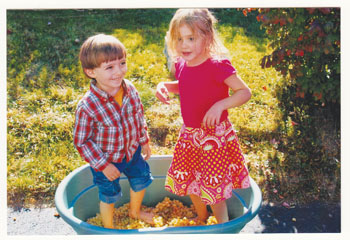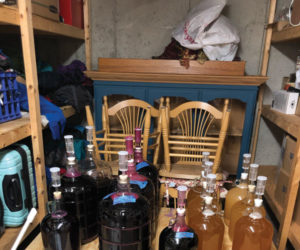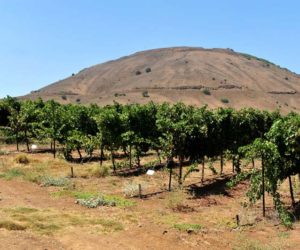
What do Montana and wine grapes have in common? Not much, you say, but when the neighbors said we couldn’t grow them, we took the challenge. Not so much to prove them wrong, but so we could have those beautiful bubbling carboys full of liquid gold. We live in Montana’s “banana belt” after all. We decided to take the plunge despite reading Wes Hagen’s caution in WineMaker’s Guide to Growing Grapes to plant ornamentals, not winegrapes. However, we did benefit immensely from Wes’ guidance and spent innumerable hours doing Internet research too. Both provided insight into the many aspects of growing grapes — from planting to irrigation to pruning and more.
We already had a backyard facing south on a slightly sloping lot near Hamilton, Montana, so finding the ideal location for the vineyard was a matter of preference. After researching varieties through the University of Minnesota, we bought five varieties and planted about 700 vines, all being French-American hybrids that can take the winter cold yet retain some French wine qualities. Three of these were developed by the University (Frontenac, Frontenac Gris and Marquette), and the other two (St. Pepin and Somerset), were hybridized by Elmer Swenson in Wisconsin.
In the meantime, we were busy installing the trellis system. Since we are in our sixties, we decided to do a single cordon at about shoulder height on the theory that it would be easy to harvest the grapes. Metal end posts with anchors as well as metal intermediate posts were installed and wires were stretched. Soil samples were evaluated; we needed just a little nitrogen for grape production.
One hundred vines arrived mid-May 2010, and were in the ground a few days later. The remainder were planted the following year after it was determined the neighbors were wrong; our grapes thrived and 98% of the vines survived the winter! The vineyard is planted on rocky glacial till mixed with rock flour and has good drainage. We spread our 700 vines over 3⁄4 of an acre with 7 feet (2.1 m) between rows and 5 feet (1.5 m) spacing between plants. With our mediocre soil we weren’t worried about excessive vine and leaf production. The drip irrigation system was installed with the planting since we dropped a 1⁄2-inch PVC tube about 18 inches (38 cm) into the ground onto a 4-inch (10 cm) gravel bed next to each vine. The PVC was capped, and the caps drilled out to accept 1⁄4-inch drip tube. The water is thus delivered to the root system. This is a water conserving device since little surface evaporation takes place except at those occasional frustrating drip irrigation connections that seem to leak no matter what. The water is pulled from a well with a solar submersible pump to a cistern and pressurized by a solar surface pump to feed the drip lines. Automatic timers are set to deliver the water on schedule and adjusted as weather dictates.
Unlike warm weather areas, we wait until mid-April to prune and then work like mad to get the job done before bud break. By waiting until the last minute, we avoid having the tips of the pruned vines die back several inches. We also try to keep the ground bare of weeds to capture the sun’s heat in the soil during our short northern growing season. Harvest comes mid- to late-September, except the table grapes finish in late August. All have averaged our targeted Brix level of 22-26 the past two years.
In 2013, we harvested nearly a ton of grapes, yielding 130 gallons. We’ll go for the appellation next year.






